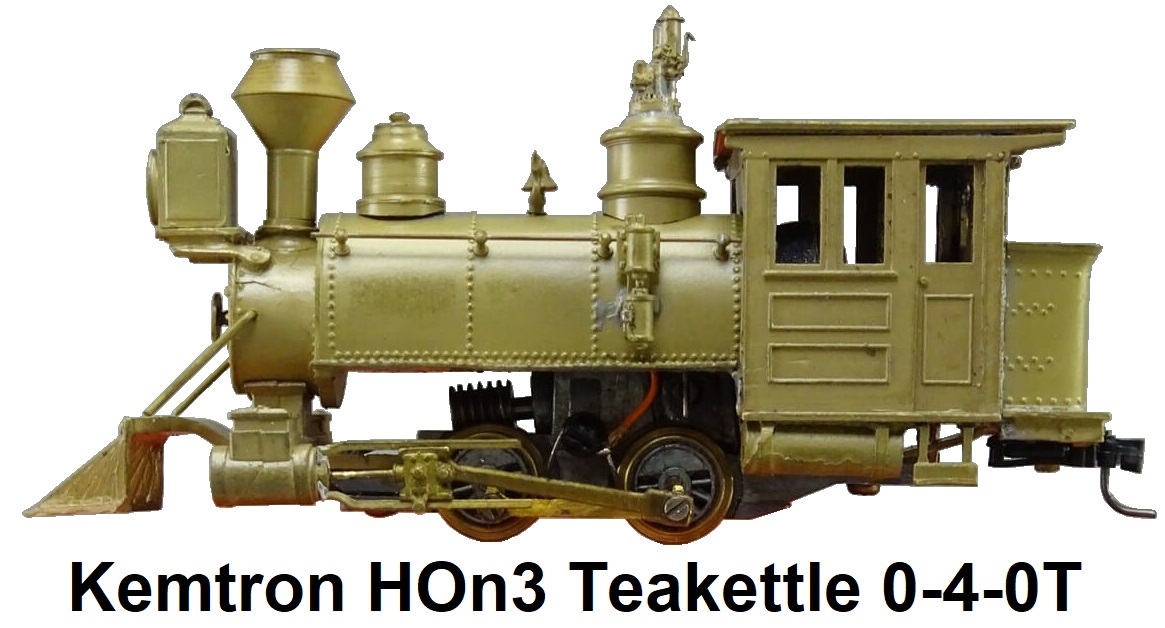 The Kemtron story is about a custom modeling operation that was very fluid with many people contributing to its history over
time. The originator of Kemtron was Levon J. Kemalyan (1907-76) of Fresno California. Kemalyan grew up in Fresno and attended
Fresno public schools. In 1929 Levon started out running the photo engraving business that his father had started in 1903
called the Fresno Photo Engraving Company. Kemalyan's interest in model trains led him to found Kemtron Corporation in the
early 1950's as a manufacturer of model railway cars, locomotives, cast metal and lost wax cast parts (especially for
scratchbuilders), conversion kits and accessories.
The Kemtron story is about a custom modeling operation that was very fluid with many people contributing to its history over
time. The originator of Kemtron was Levon J. Kemalyan (1907-76) of Fresno California. Kemalyan grew up in Fresno and attended
Fresno public schools. In 1929 Levon started out running the photo engraving business that his father had started in 1903
called the Fresno Photo Engraving Company. Kemalyan's interest in model trains led him to found Kemtron Corporation in the
early 1950's as a manufacturer of model railway cars, locomotives, cast metal and lost wax cast parts (especially for
scratchbuilders), conversion kits and accessories.
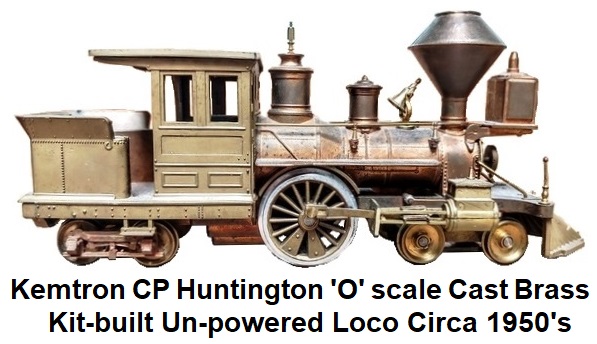 Kemtron Products Co. was initially located at 750 Fulton Street in Fresno.
The company produced scale model kits and parts in 'O', On3, HO, HOn3, 'OO', S, and TT. In the mid-1960's Kemtron also
produced a line of slot cars and accessories. The name Kemtron was derived from 'Kemalyan' and 'electronic'. By 1960 Kemtron
was the world's largest maker of scale railroad kits, producing one million parts a year and selling them worldwide to
enthusiasts as far away as India and Australia. Eventually Kemalyan also established an ownership stake in U.S. Hobbies, Inc.,
an importer of brass scale trains from Japan.
Kemtron Products Co. was initially located at 750 Fulton Street in Fresno.
The company produced scale model kits and parts in 'O', On3, HO, HOn3, 'OO', S, and TT. In the mid-1960's Kemtron also
produced a line of slot cars and accessories. The name Kemtron was derived from 'Kemalyan' and 'electronic'. By 1960 Kemtron
was the world's largest maker of scale railroad kits, producing one million parts a year and selling them worldwide to
enthusiasts as far away as India and Australia. Eventually Kemalyan also established an ownership stake in U.S. Hobbies, Inc.,
an importer of brass scale trains from Japan.
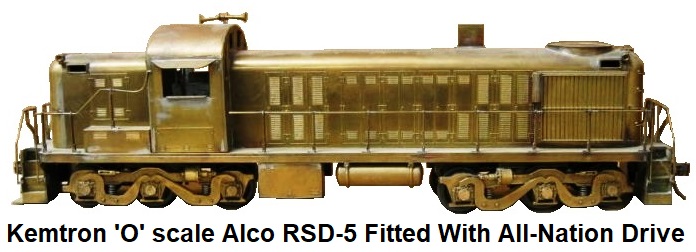


During the mid-1950's Levon Kemalyan steadily grew his business by bringing in talented and skilled modelers and pattern makers.
This included John S. Anderson (1925 - 2000), an HO and HOn3 fan, artist and die-maker who became Kemtron's chief engineer, Clifford D. Grandt
who was a master pattern maker skilled at the art of lost wax casting, and Harry Parker who was the general supervisor of Kemtron's
lost wax casting department. Cliff Grandt had built the first plastic injection molding machine used by Kemtron, around 1950.
Bruce Bechtold came to Kemtron around 1955 as a pattern maker.
 The 1st catalog was issued by Kemtron in 1955. It listed
'O' scale Alco RS-3 and EMD GP-7 diesel kits in etched brass, as well as 'O' scale locomtive parts to construct a Lima Shay, a Camel Back
4-6-0 in HO, a C & NW 4-4-2 in HO, 0-4-0 Dockside switchers in HOn3 and TT scale, a Montezuma 2-8-0 in HOn3, a NYC Niagara 4-8-4 in HO,
a NYC 4-6-4 Hudson in HO, and Teakettle 0-4-0's in HO, HOn3 and TT scale. It also featured
the 'O' scale model of Southern Pacific's #1 C.P. Huntington 4-2-4T in kit form, an Alco freight diesel in HO, a Baldwin diesel
switcher in HO, a GMC freight diesel in HO, GP-7 road diesels in HO and OO scale, a 'Stubby' yard diesel in HO and HOn3,
'O' scale trucks, On3 scale trucks, car kits, and a slew of other cast parts. Other powered items included Brill rail
buses in HO and HOn3, a powered box car in HO, and the animated Toonerville Trolley in HO. Rolling stock consisted of an assortment of
box cars, cattle cars, flat cars gondolas, hoppers, tank cars and cabooses in multiple gauges.
The 1st catalog was issued by Kemtron in 1955. It listed
'O' scale Alco RS-3 and EMD GP-7 diesel kits in etched brass, as well as 'O' scale locomtive parts to construct a Lima Shay, a Camel Back
4-6-0 in HO, a C & NW 4-4-2 in HO, 0-4-0 Dockside switchers in HOn3 and TT scale, a Montezuma 2-8-0 in HOn3, a NYC Niagara 4-8-4 in HO,
a NYC 4-6-4 Hudson in HO, and Teakettle 0-4-0's in HO, HOn3 and TT scale. It also featured
the 'O' scale model of Southern Pacific's #1 C.P. Huntington 4-2-4T in kit form, an Alco freight diesel in HO, a Baldwin diesel
switcher in HO, a GMC freight diesel in HO, GP-7 road diesels in HO and OO scale, a 'Stubby' yard diesel in HO and HOn3,
'O' scale trucks, On3 scale trucks, car kits, and a slew of other cast parts. Other powered items included Brill rail
buses in HO and HOn3, a powered box car in HO, and the animated Toonerville Trolley in HO. Rolling stock consisted of an assortment of
box cars, cattle cars, flat cars gondolas, hoppers, tank cars and cabooses in multiple gauges.
 One of Kemtron's product lines, photo engraved car kits, particularly the flats, often used zinc
(or a very high zinc content brass) sheet, as opposed to brass.
The 'blue' coating, was the 'photo resist' that was not cleaned off. Kemtron was initially a sideline of Fresno Photo Engraving,
which explains why common photo engraving materials were often used. The photo engraving process involves coating the brass with
a light sensitive film. Then, a positive of the artwork is placed on the coated brass and it is exposed to light. Where the positive
is clear, the light exposes the film on the brass and fixes it. The brass is then washed and the unexposed film washes off. Next,
the brass is exposed to ferric chloride which dissolves the exposed brass. The ferric chloride works very fast, so the duration
of the exposure is critical.
One of Kemtron's product lines, photo engraved car kits, particularly the flats, often used zinc
(or a very high zinc content brass) sheet, as opposed to brass.
The 'blue' coating, was the 'photo resist' that was not cleaned off. Kemtron was initially a sideline of Fresno Photo Engraving,
which explains why common photo engraving materials were often used. The photo engraving process involves coating the brass with
a light sensitive film. Then, a positive of the artwork is placed on the coated brass and it is exposed to light. Where the positive
is clear, the light exposes the film on the brass and fixes it. The brass is then washed and the unexposed film washes off. Next,
the brass is exposed to ferric chloride which dissolves the exposed brass. The ferric chloride works very fast, so the duration
of the exposure is critical.
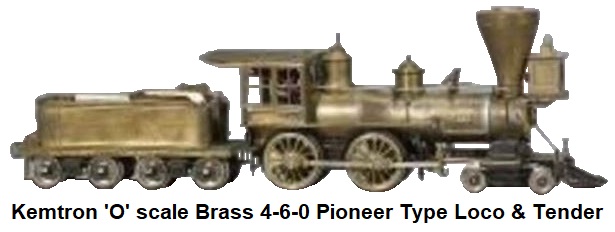 All Kemtron parts were made of either brass, nickel silver or beryllium copper using either screw machine
turnings, photo engraved detail, punched metal or lost wax casting processes. The lost wax casting process has existed for several
hundred years. It starts out with wax material injected into a mold, usually made of rubber or metal. Once hardened, the wax is
removed and clustered with other wax pieces on a sprue base. The sprue is then covered with a stainless steel can. These canned
clusters are then filled with an investment material. The canned, investment wax clusters, now referred to as a flask, is heated
to 1400 degrees for 6 hours. The heat eliminates the wax from the investment, leaving a cavity. At this point the flask is ready
for casting. Molten metal and the flask are placed into a whirler and the cast is made by centrifugal force.
All Kemtron parts were made of either brass, nickel silver or beryllium copper using either screw machine
turnings, photo engraved detail, punched metal or lost wax casting processes. The lost wax casting process has existed for several
hundred years. It starts out with wax material injected into a mold, usually made of rubber or metal. Once hardened, the wax is
removed and clustered with other wax pieces on a sprue base. The sprue is then covered with a stainless steel can. These canned
clusters are then filled with an investment material. The canned, investment wax clusters, now referred to as a flask, is heated
to 1400 degrees for 6 hours. The heat eliminates the wax from the investment, leaving a cavity. At this point the flask is ready
for casting. Molten metal and the flask are placed into a whirler and the cast is made by centrifugal force.
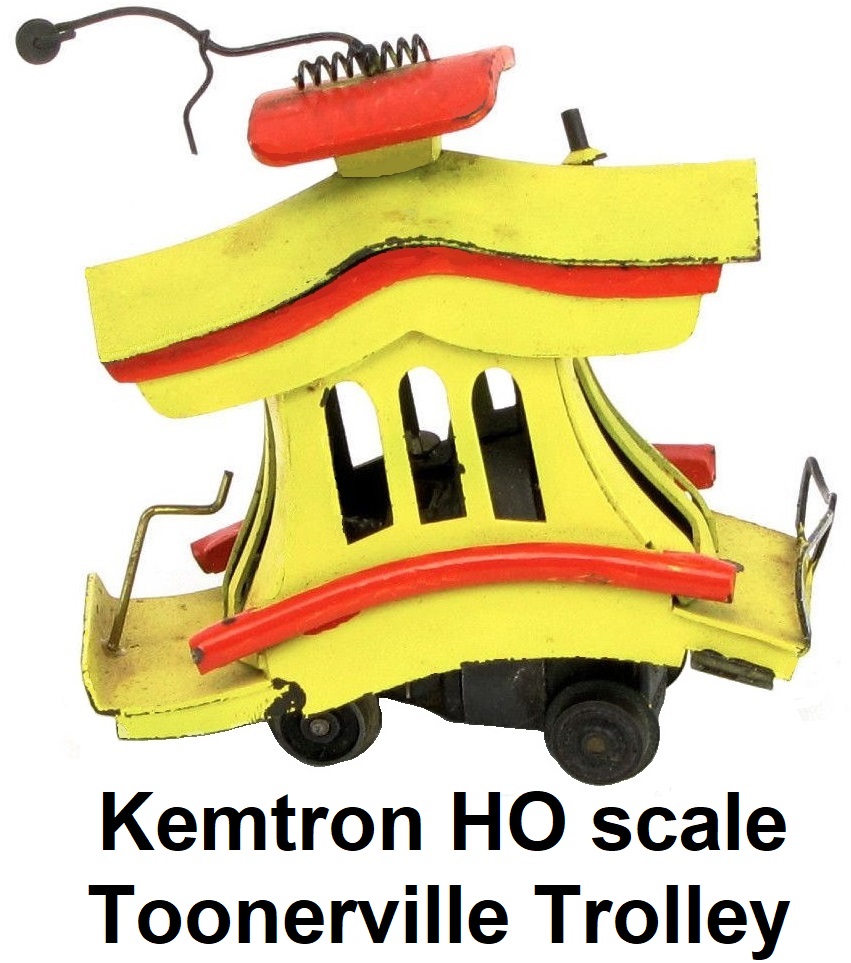 Fontaine Fox was creator of the very popular nationally syndicated “Toonerville Folks” gag cartoon strips in the early 1900's. In the
strip, the town of Toonerville represented the suburbs. The Toonerville Trolley was a device used in the comic that the folks of Toonerville
relied on to get to their trains and ultimately to their jobs in the city on a daily basis. The trolley was rickety and was operated
by a crusty motorman. The strip was so popular that the decrepit rattletrap 'Toonerville Trolley' became American slang for any third-rate
railroad or rough train ride. The strip was last published in February, 1955. At its peak, the cartoon was in nearly 300 newspapers.
Kemtron approached Fontaine Fox about producing an HO gauge model of the little trolley. Permission was granted, and in 1954 the trolley
made its debut in the hobby market. The Kemtron Toonerville Trolley was made fully of brass and hand soldered together. It measured
2½" long, and came fully painted. It could be purchased as an unpowered unit or as a powered unit equipped with a Kemtron 4-wheel
#KL-66 power truck with a bronze frame. The unpowered unit cost $11.50, while the powered unit cost $25.00. Kemtron considered
the unit a kit, since the purchaser was required to install a single screw to attach the superstructure to the power chassis. The Kemtron
trolley is oversize for HO scale, but has a great animated effect when in operation. Some Kemtron Toonerville Trolleys came with the
'Skipper,' the bewhiskered motorman. The Kemtron Toonerville is quite rare, indicating that not many were manufactured. One was
sold on Ebay in July 2007 for $95.
Fontaine Fox was creator of the very popular nationally syndicated “Toonerville Folks” gag cartoon strips in the early 1900's. In the
strip, the town of Toonerville represented the suburbs. The Toonerville Trolley was a device used in the comic that the folks of Toonerville
relied on to get to their trains and ultimately to their jobs in the city on a daily basis. The trolley was rickety and was operated
by a crusty motorman. The strip was so popular that the decrepit rattletrap 'Toonerville Trolley' became American slang for any third-rate
railroad or rough train ride. The strip was last published in February, 1955. At its peak, the cartoon was in nearly 300 newspapers.
Kemtron approached Fontaine Fox about producing an HO gauge model of the little trolley. Permission was granted, and in 1954 the trolley
made its debut in the hobby market. The Kemtron Toonerville Trolley was made fully of brass and hand soldered together. It measured
2½" long, and came fully painted. It could be purchased as an unpowered unit or as a powered unit equipped with a Kemtron 4-wheel
#KL-66 power truck with a bronze frame. The unpowered unit cost $11.50, while the powered unit cost $25.00. Kemtron considered
the unit a kit, since the purchaser was required to install a single screw to attach the superstructure to the power chassis. The Kemtron
trolley is oversize for HO scale, but has a great animated effect when in operation. Some Kemtron Toonerville Trolleys came with the
'Skipper,' the bewhiskered motorman. The Kemtron Toonerville is quite rare, indicating that not many were manufactured. One was
sold on Ebay in July 2007 for $95.
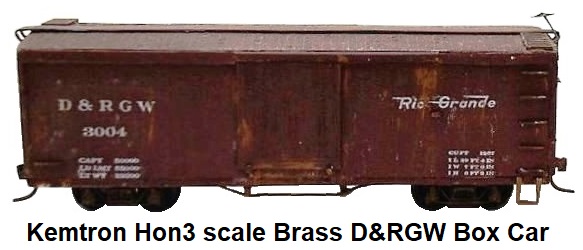 In 1954 Kemtron acquired the 'OO' gauge tooling and inventory of Scale-Craft.
The 'OO' scale in the United States was different than the 'OO' scale trains produced in Great Britain. American 'OO'
is 1/76 scale (4mm: 1 foot) running on 19 mm ¾" gauge track. The 'OO' models are sized about halfway between HO (1/87)
and S gauge (1/64). Prior to the Scale-Craft acquisition Kemtron was already making 'OO' scale products, including a GP-7 diesel
in brass, a 4-wheel passenger truck and 2 types of arch bar trucks. Throughout the rest of the 1950's Kemtron catalogues advertised
the former Scale-Craft 'OO' line which included an 0-6-0, 4-6-0, 4-8-4, MU cars, gas-electrics, freight and passenger cars.
However, 'OO' turned out to be a poor selling product line for Kemtron, and by the 1960's it was completely phased out. Supposedly,
the Scale-Craft 'OO' dies were destroyed to avoid having to pay property taxes on them.
In 1954 Kemtron acquired the 'OO' gauge tooling and inventory of Scale-Craft.
The 'OO' scale in the United States was different than the 'OO' scale trains produced in Great Britain. American 'OO'
is 1/76 scale (4mm: 1 foot) running on 19 mm ¾" gauge track. The 'OO' models are sized about halfway between HO (1/87)
and S gauge (1/64). Prior to the Scale-Craft acquisition Kemtron was already making 'OO' scale products, including a GP-7 diesel
in brass, a 4-wheel passenger truck and 2 types of arch bar trucks. Throughout the rest of the 1950's Kemtron catalogues advertised
the former Scale-Craft 'OO' line which included an 0-6-0, 4-6-0, 4-8-4, MU cars, gas-electrics, freight and passenger cars.
However, 'OO' turned out to be a poor selling product line for Kemtron, and by the 1960's it was completely phased out. Supposedly,
the Scale-Craft 'OO' dies were destroyed to avoid having to pay property taxes on them.
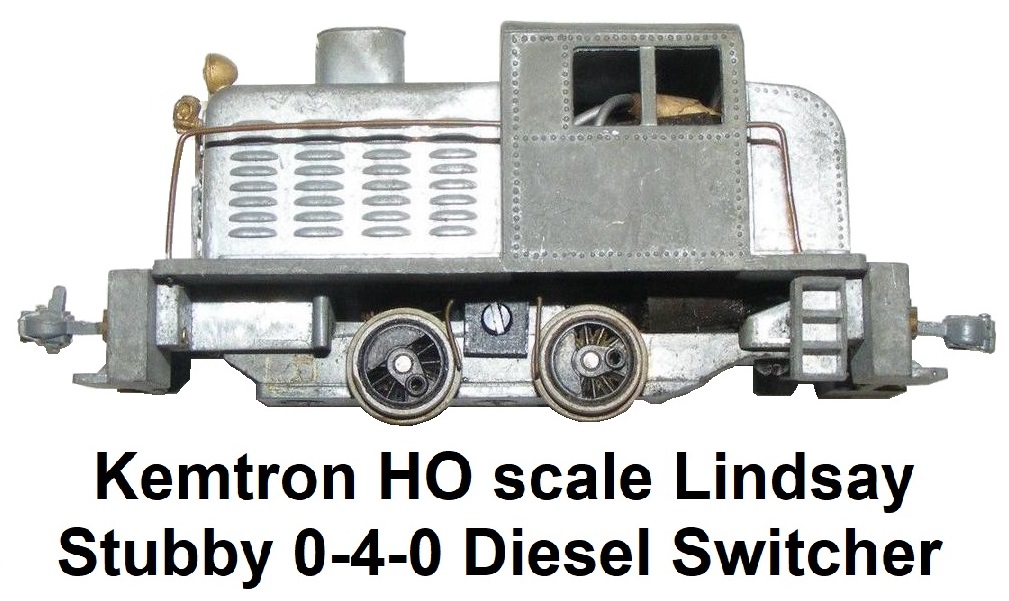 Around 1955, Levon purchased the Lindsay Products line of HO scale models from Bob Lindsay of Culver City, CA.
Lindsay had been one of the pioneers in offering detail parts in lost wax castings, and also produced several die cast Zamak
models. He started out working for Gordon Varney but decided to venture out on his own in 1947.
Lindsay's 7-pole precision motors were well known for their small size and the close fit the armatures had with the
Alnico magnets they went into. They produced a motor truck with a coupling shaft that could also accept a slave truck if a
hobbyist wanted to power another truck, rather than put two motors in a single model. Lindsay offered several HO loco kits,
including Alco FA2/FB2 and PA/PB kits which were die cast with lost wax detail parts, and a brass road switcher. They had
also produced a TT scale 0-4-0 Dockside tank switcher called the 'Tiny Tim'.
From that line's acquisition Kemtron made a series of small motor cars to run on model railroads as inspection cars. These included
an HO scale model of the 1907 Thomas Flyer, the prototype of which was used on the Diamond & Caldor RR in Diamond Springs, Ca.
The 'Stubby' 0-4-0 yard diesel switcher offered by Kemtron was originally part of the Lindsay acquisition. The Kemtron Docksider
and Teakettle locos used the tiny Lindsay motor and floating gear mechanism. Kemtron also did a New York Central centipede tender
in the HO scale Lindsay line.
Around 1955, Levon purchased the Lindsay Products line of HO scale models from Bob Lindsay of Culver City, CA.
Lindsay had been one of the pioneers in offering detail parts in lost wax castings, and also produced several die cast Zamak
models. He started out working for Gordon Varney but decided to venture out on his own in 1947.
Lindsay's 7-pole precision motors were well known for their small size and the close fit the armatures had with the
Alnico magnets they went into. They produced a motor truck with a coupling shaft that could also accept a slave truck if a
hobbyist wanted to power another truck, rather than put two motors in a single model. Lindsay offered several HO loco kits,
including Alco FA2/FB2 and PA/PB kits which were die cast with lost wax detail parts, and a brass road switcher. They had
also produced a TT scale 0-4-0 Dockside tank switcher called the 'Tiny Tim'.
From that line's acquisition Kemtron made a series of small motor cars to run on model railroads as inspection cars. These included
an HO scale model of the 1907 Thomas Flyer, the prototype of which was used on the Diamond & Caldor RR in Diamond Springs, Ca.
The 'Stubby' 0-4-0 yard diesel switcher offered by Kemtron was originally part of the Lindsay acquisition. The Kemtron Docksider
and Teakettle locos used the tiny Lindsay motor and floating gear mechanism. Kemtron also did a New York Central centipede tender
in the HO scale Lindsay line.
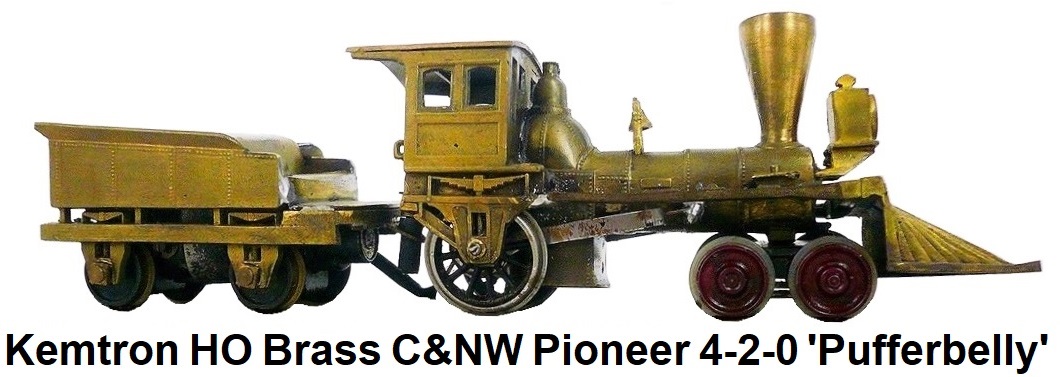 Levon also purchased the Silver Streak model of the Chicago & Northwestern Pioneer locomotive. The pioneer was an HO Scale model
referred to in the Kemtron catalogues as a Pufferbelly. Levon dabbled in TT Scale as well, and Cliff Grandt made the dies for the
Alco locomotive models that Kemtron made in TT Scale. Scaled for an engineer's ruler at 1/10 inch to the scale foot, TT was at that
time the smallest commercially-produced model train. TT's dimensions are about 73% of HO. The designation 'TT' is an abbreviation
of 'Table-Top'. TT could have exquisite detail and it was as fully functional as any other miniature train, yet ran in less space.
The diminutive trains saw a burst of new adherents in the 1950's, but things cooled in the early 1960's. TT was eventually eclipsed
by the smaller N Scale.
Levon also purchased the Silver Streak model of the Chicago & Northwestern Pioneer locomotive. The pioneer was an HO Scale model
referred to in the Kemtron catalogues as a Pufferbelly. Levon dabbled in TT Scale as well, and Cliff Grandt made the dies for the
Alco locomotive models that Kemtron made in TT Scale. Scaled for an engineer's ruler at 1/10 inch to the scale foot, TT was at that
time the smallest commercially-produced model train. TT's dimensions are about 73% of HO. The designation 'TT' is an abbreviation
of 'Table-Top'. TT could have exquisite detail and it was as fully functional as any other miniature train, yet ran in less space.
The diminutive trains saw a burst of new adherents in the 1950's, but things cooled in the early 1960's. TT was eventually eclipsed
by the smaller N Scale.
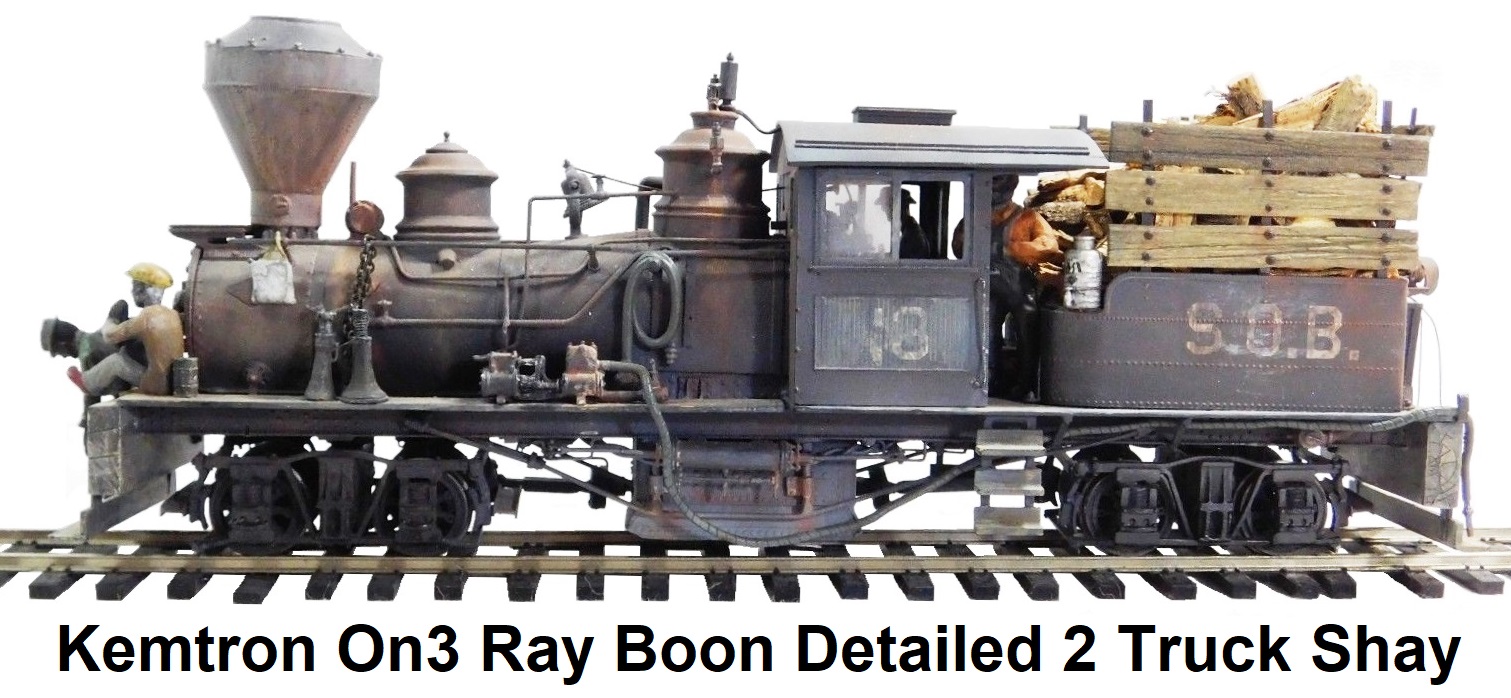 Kemtron also produced some of the parts for Lobaugh and KTM (Katsumi) locomotives.
By 1960, the
Kemtron plant was 11,000 square feet (1,000 m2) with 15 employees. Most of the Kemtron GP-7 models were fitted with
the All-Nation drive from their F-3 models. In the 1st edition
catalogue, the D&RG C-16 2-8-0 was not listed as a kit, but quite a few of the parts were available. Kemtron also offered
a completely built-up brass Cab-forward shell with lost wax cast snow pilot for converting Bowser
HO scale 4-6-6-4 articulated UP Challenger locos. The complete kit, which included a 12 volt grain-of-wheat light bulb sold for
$6.25. They also offered oil tender conversion kits for Mantua HO scale Old Time tenders. In the late
1960’s, Kemtron made an EMD GP-20 model. Between 1958 and 1972 under Kemalyan's ownership, Kemtron Products
produced Niagrara parts, SP MT3 & MT4's, an SP 5000 cab forward, a Wabash 2-6-0, a UP 4-8-2 (C-48), UP streamlined passenger
car kits, and the GP series diesel kits. Kemtron had a New York Central Niagara 4-8-4 listed in their 6th edition catalogue
from 1961. The model was listed for $175, and sold under the Kemtron name.
Kemtron also produced some of the parts for Lobaugh and KTM (Katsumi) locomotives.
By 1960, the
Kemtron plant was 11,000 square feet (1,000 m2) with 15 employees. Most of the Kemtron GP-7 models were fitted with
the All-Nation drive from their F-3 models. In the 1st edition
catalogue, the D&RG C-16 2-8-0 was not listed as a kit, but quite a few of the parts were available. Kemtron also offered
a completely built-up brass Cab-forward shell with lost wax cast snow pilot for converting Bowser
HO scale 4-6-6-4 articulated UP Challenger locos. The complete kit, which included a 12 volt grain-of-wheat light bulb sold for
$6.25. They also offered oil tender conversion kits for Mantua HO scale Old Time tenders. In the late
1960’s, Kemtron made an EMD GP-20 model. Between 1958 and 1972 under Kemalyan's ownership, Kemtron Products
produced Niagrara parts, SP MT3 & MT4's, an SP 5000 cab forward, a Wabash 2-6-0, a UP 4-8-2 (C-48), UP streamlined passenger
car kits, and the GP series diesel kits. Kemtron had a New York Central Niagara 4-8-4 listed in their 6th edition catalogue
from 1961. The model was listed for $175, and sold under the Kemtron name.
Kemtron also produced 'O' Scale Union Pacific passenger cars. These were etched brass kits that fit in once
again with the photo engraving business. There were nine different cars produced per the catalogue. These were a X-1501 Pullman,
X-1502 coach, X-1503 baggage car, X-1504 10 bedroom 6 section Pullman, X-1505 11 bedroom Pullman, X-1506 5 bedroom Club sleeper,
X-1507 dome observation, X-1508 dome coach and X-1509 dome diner.
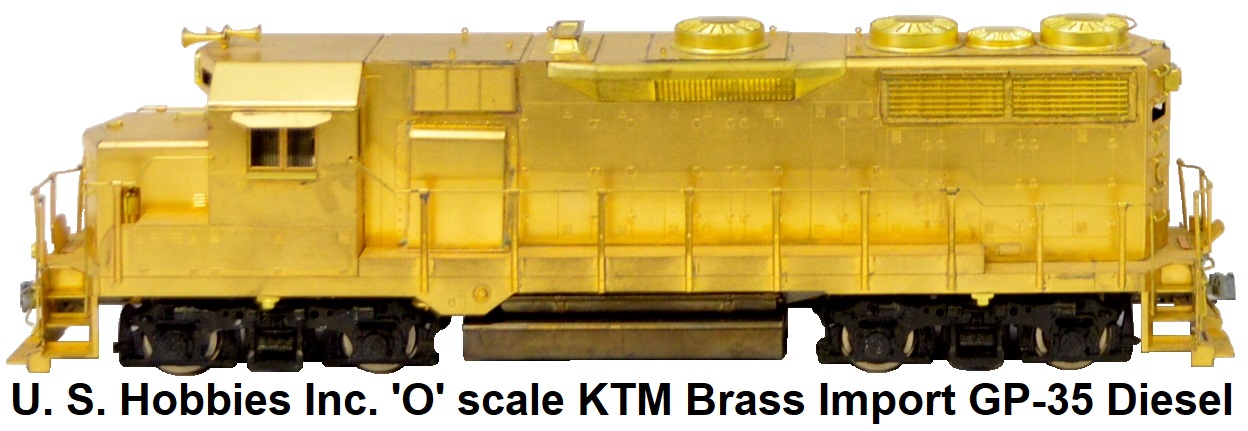


 Levon Kemalyan had his fingers in a lot of things, and started a company called U.S. Hobbies Inc. to import brass models from
Japan in the 1950's. In the early days of the brass importing business, all of the product engineering, die work, and casting
were done in the United States. The parts were then shipped to Japan to be assembled on the models. The very early
international models pieces had a lot of turnings and other machined parts. In the 1st edition Kemtron catalogue from
1955, some imported brass models from 'JI' were being offered. The JI stood for 'Japan Import'. Initially Kemtron stated that
the quality was not up to their standards, but the models were acceptable for the price they were being sold for. The
Japanese, after World War II, began initiating higher manufacturing standards in the body detailing of model trains by
adapting lost wax-casting systems. Over time, the quality and craftsmanship of the Japanese imports improved greatly. Max
Gray imported his first brass models from Japan in 1952, and there is a strong possibility that Gray and Levon Kemalyan had
some business dealings. In the early 1950’s,
Levon Kemalyan had his fingers in a lot of things, and started a company called U.S. Hobbies Inc. to import brass models from
Japan in the 1950's. In the early days of the brass importing business, all of the product engineering, die work, and casting
were done in the United States. The parts were then shipped to Japan to be assembled on the models. The very early
international models pieces had a lot of turnings and other machined parts. In the 1st edition Kemtron catalogue from
1955, some imported brass models from 'JI' were being offered. The JI stood for 'Japan Import'. Initially Kemtron stated that
the quality was not up to their standards, but the models were acceptable for the price they were being sold for. The
Japanese, after World War II, began initiating higher manufacturing standards in the body detailing of model trains by
adapting lost wax-casting systems. Over time, the quality and craftsmanship of the Japanese imports improved greatly. Max
Gray imported his first brass models from Japan in 1952, and there is a strong possibility that Gray and Levon Kemalyan had
some business dealings. In the early 1950’s,
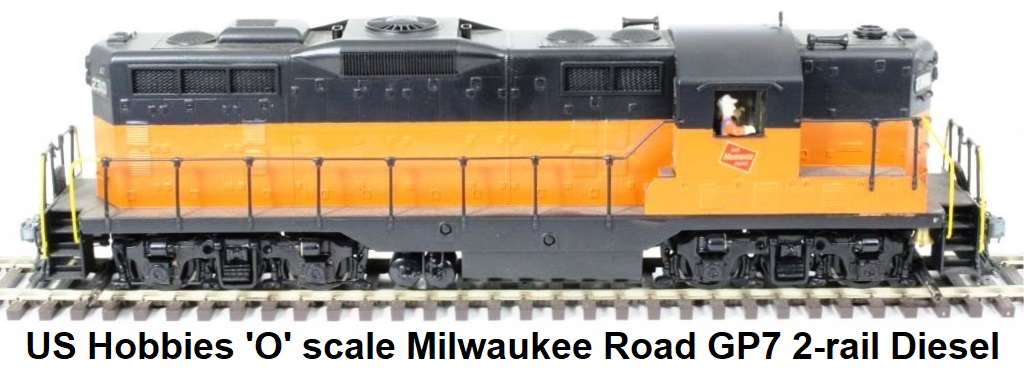 Kemtron was the only model manufacturer doing brass detail castings, so it is beleived that Max Gray must have purchased his
castings from Kemtron. A major portion of the Kemtron casting business went to Japan for models made there. After Max Gray
passed away at the age of 50 in 1966, it is believed that Levon Kemalyan of Kemtron acquired parts of the Max Gray line. Both
Gray and Kemalyan utilized KTM (Katsumi Mokeiten Co., Ltd.) as their Japanese builder. KTM models, based in Tokyo and founded
in 1948, were considered to be the best Japanese producer of small batch brass models at the time. U.S. Hobbies Inc. also
utilized Japanese builder Toby for some of its brass products. The Toby Model Company was a brass manufacturer founded by Mr.
Noboru Sawada in Yokohama, Japan.
Kemtron was the only model manufacturer doing brass detail castings, so it is beleived that Max Gray must have purchased his
castings from Kemtron. A major portion of the Kemtron casting business went to Japan for models made there. After Max Gray
passed away at the age of 50 in 1966, it is believed that Levon Kemalyan of Kemtron acquired parts of the Max Gray line. Both
Gray and Kemalyan utilized KTM (Katsumi Mokeiten Co., Ltd.) as their Japanese builder. KTM models, based in Tokyo and founded
in 1948, were considered to be the best Japanese producer of small batch brass models at the time. U.S. Hobbies Inc. also
utilized Japanese builder Toby for some of its brass products. The Toby Model Company was a brass manufacturer founded by Mr.
Noboru Sawada in Yokohama, Japan.




 U.S. Hobbies got into the plastic injection business with a modern 'O' scale 50’ box car. The box car had a unique design
with one plug door and one sliding door. The plastic injection models were produced in Wheeling, Illinois by Continental
Monarch Models, which was owned by Jacques Berry. There were actually two freight cars developed initially. One was the 50'
box car with one plug door and one sliding door. The other car was a plain double sliding door 50’ box car. At first, Kemtron
was the sole distributor for these 50' box car models, and they were sold under the U.S. Hobbies Inc. name and branding.
Unfortunately, there was a falling out with Kemtron, and Jacques Berry eventually moved the line of 50' box cars to the
Wm. K. Walthers Co. as his sole distributor.
U.S. Hobbies got into the plastic injection business with a modern 'O' scale 50’ box car. The box car had a unique design
with one plug door and one sliding door. The plastic injection models were produced in Wheeling, Illinois by Continental
Monarch Models, which was owned by Jacques Berry. There were actually two freight cars developed initially. One was the 50'
box car with one plug door and one sliding door. The other car was a plain double sliding door 50’ box car. At first, Kemtron
was the sole distributor for these 50' box car models, and they were sold under the U.S. Hobbies Inc. name and branding.
Unfortunately, there was a falling out with Kemtron, and Jacques Berry eventually moved the line of 50' box cars to the
Wm. K. Walthers Co. as his sole distributor.


In the 1960’s, model slot cars were very popular and Levon started producing these at a plant located at 5755 East Fountain
Way, Fresno, California. This plant would later be the location of U.S. Hobbies. A third factory was opened in Clovis,
California to make slot cars. According to some of the Kemtron slot car material, the specialty was the motors and frames. A
lot of the motors were imported from Japan. As the new slot car hobby grew and commercial raceways began to appear like
mushrooms, Kemtron became one of the pioneers of the 1/24 scale commercial racing in the United States, and by 1962, aided by
engineer John Schow Anderson, were producing an array of stamped sheet brass and soldered brass tubing in kit form that made
much of the available components for the quickly increasing market. By 1963, they marketed a line of Japanese motors under
the KTM name. Using stacked pole pieces, the different versions available, 501 to 503, Mustang, Bronco, and Wasp, were
largely defined by the thickness of the pole stacks as well as armature windings. Several of these motors were also used in
Kemtron model trains. The slot car fad was short-lived, and the Clovis plant soon closed.

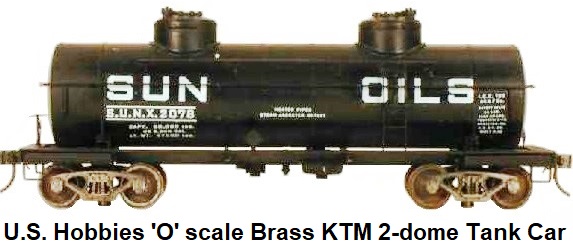

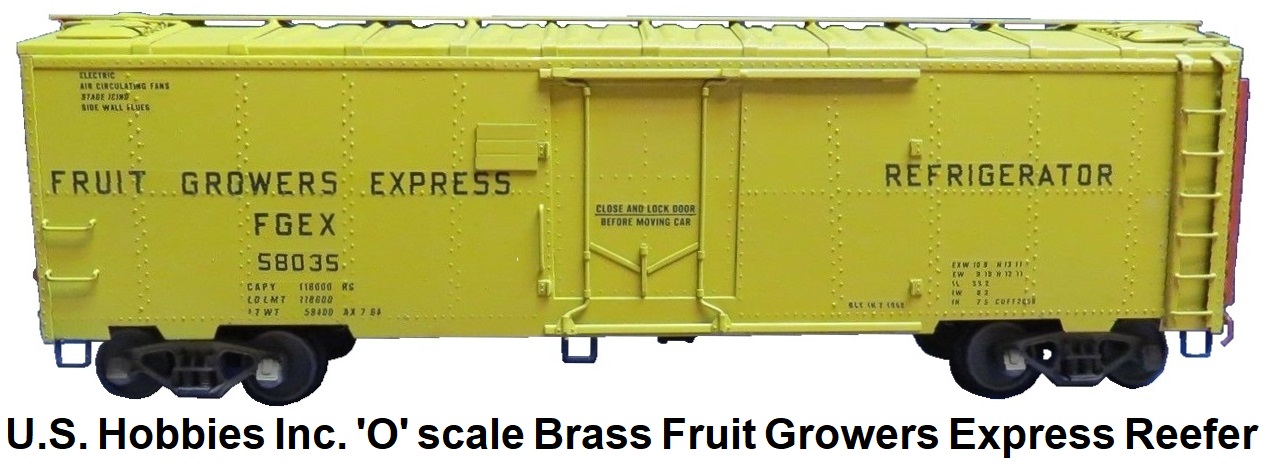

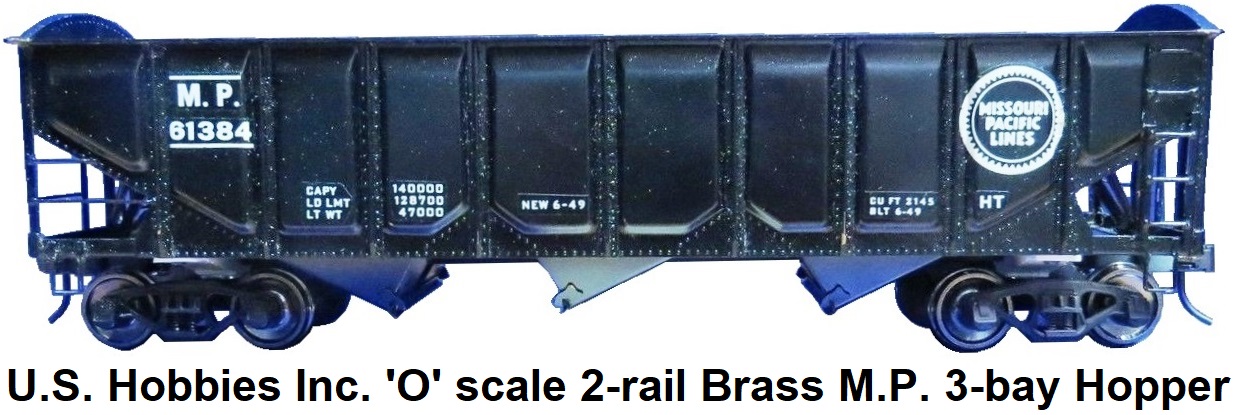
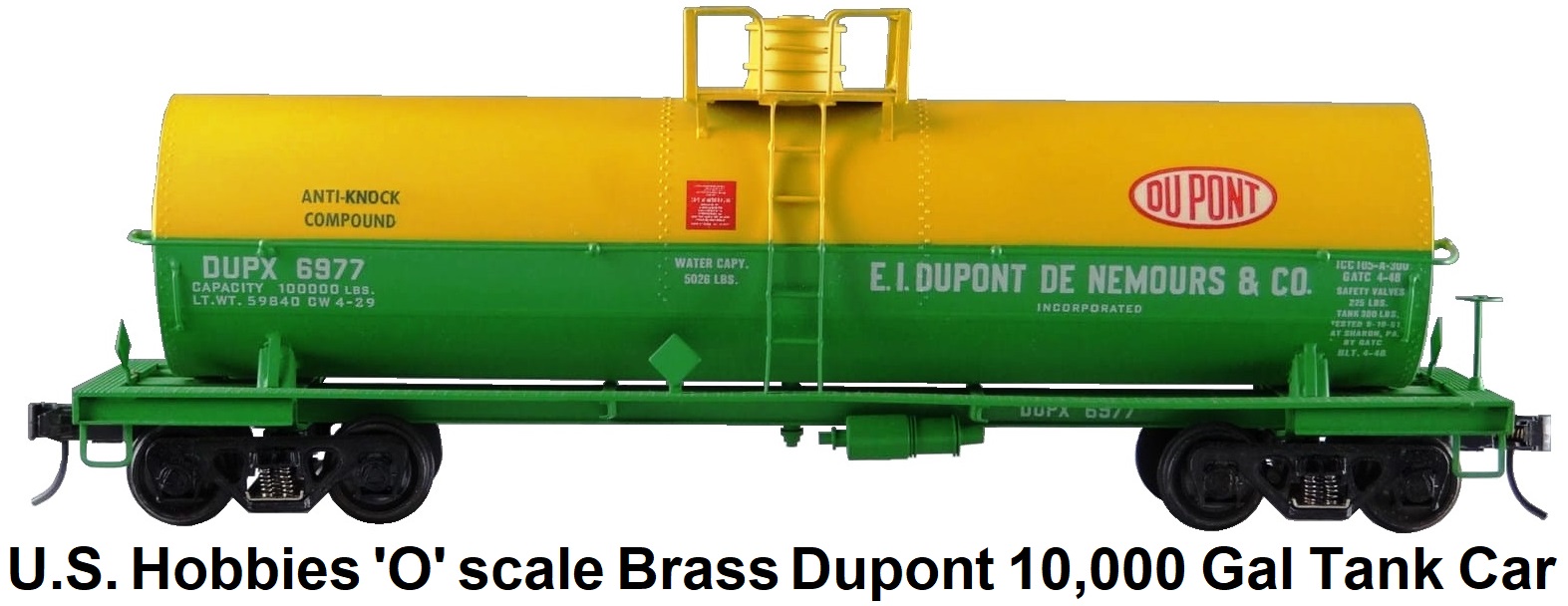
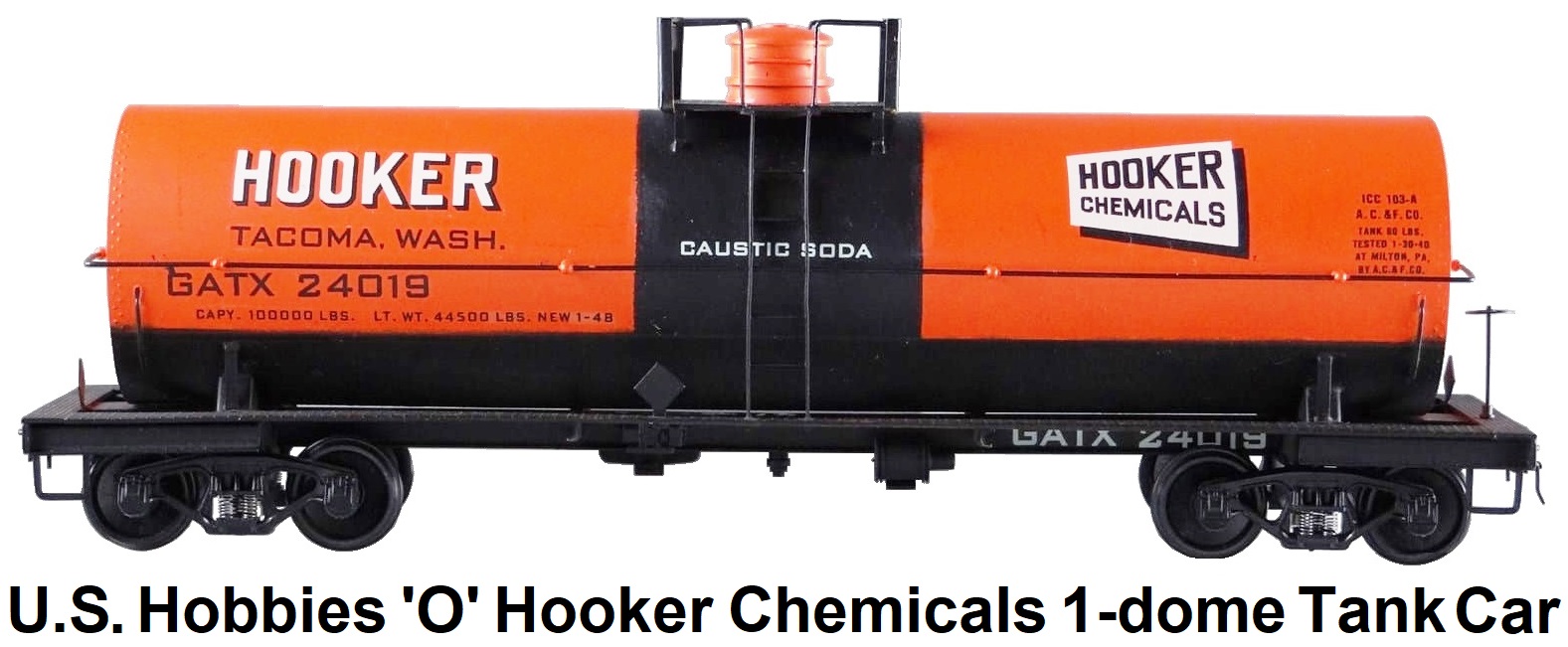
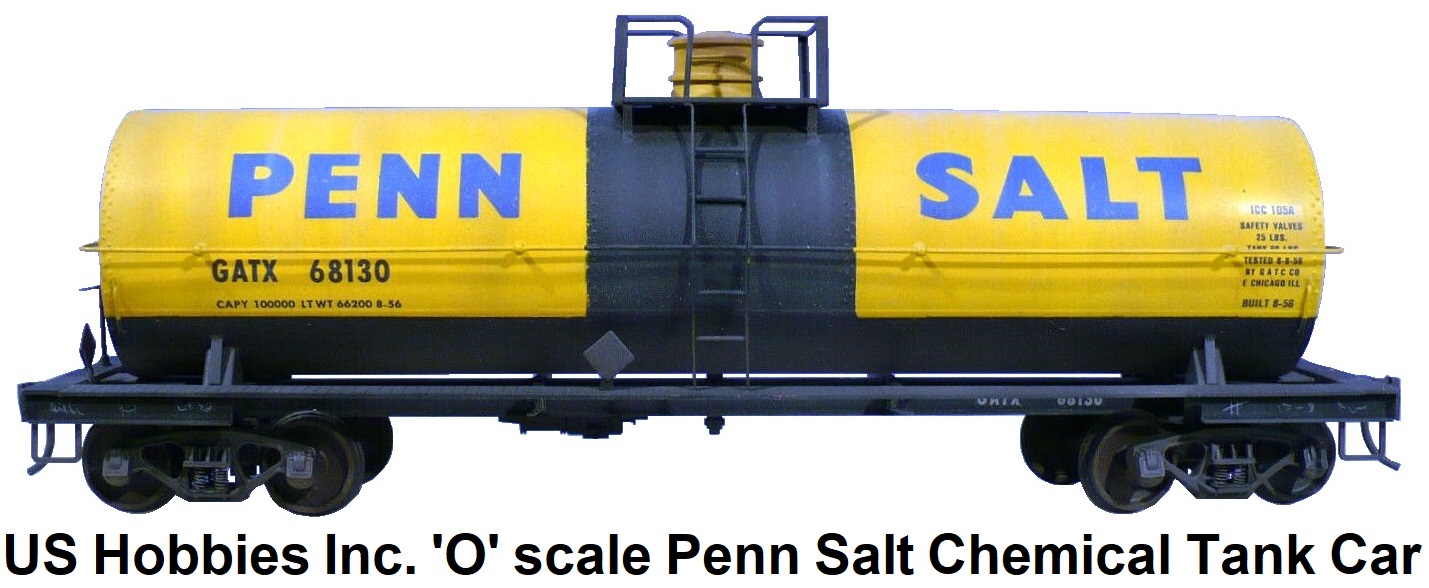
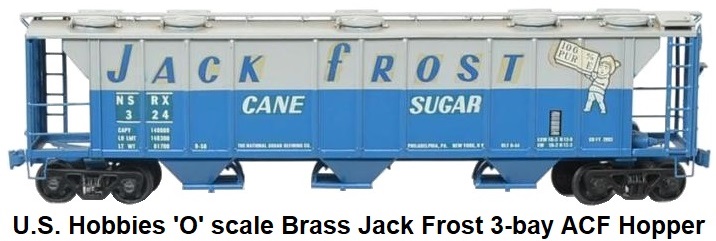
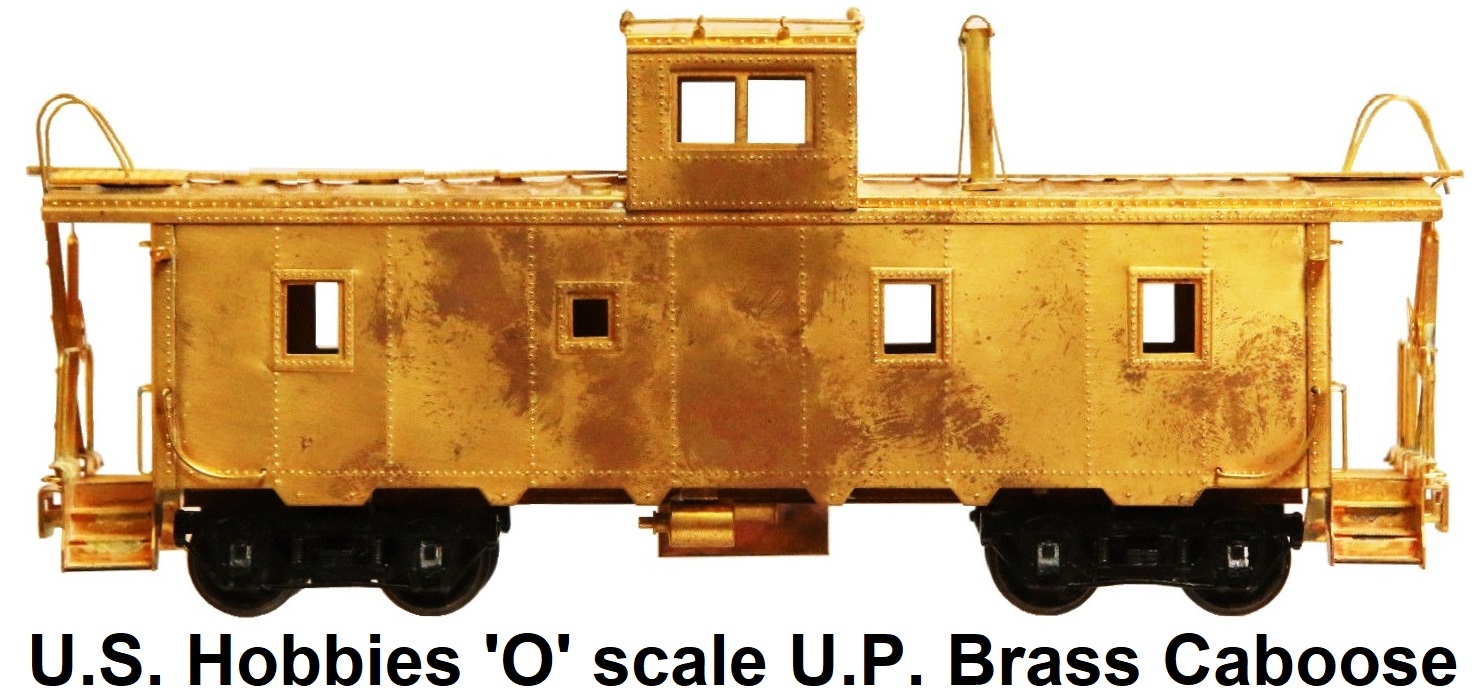
 John Anderson, Bruce Bechtold, and Harry Parker eventually went out on their own, and moved to 7070 North
Harrison St. in Pinedale, California (today part of Fresno). They started a business called Associated Brass Products on June 2nd
1959 which produced the Cal Scale line of parts. Bruce left the business first. Later, when John Anderson and Harry Parker were
getting older, the HO Scale line was sold to Bowser in June, 1985, and the 'O' Scale Line was sold to
Gerry Gresham of Huntington Beach, California. Gerry continued to improve the 'O' Scale line, renaming it the Back Shop Line.
Gerry eventually sold the line to Dave Braun. Cliff Grandt had also ventured out on his own, establishing Grandt Line Products,
Inc., makers of brass parts and highly detailed model railroad kits.
John Anderson, Bruce Bechtold, and Harry Parker eventually went out on their own, and moved to 7070 North
Harrison St. in Pinedale, California (today part of Fresno). They started a business called Associated Brass Products on June 2nd
1959 which produced the Cal Scale line of parts. Bruce left the business first. Later, when John Anderson and Harry Parker were
getting older, the HO Scale line was sold to Bowser in June, 1985, and the 'O' Scale Line was sold to
Gerry Gresham of Huntington Beach, California. Gerry continued to improve the 'O' Scale line, renaming it the Back Shop Line.
Gerry eventually sold the line to Dave Braun. Cliff Grandt had also ventured out on his own, establishing Grandt Line Products,
Inc., makers of brass parts and highly detailed model railroad kits.
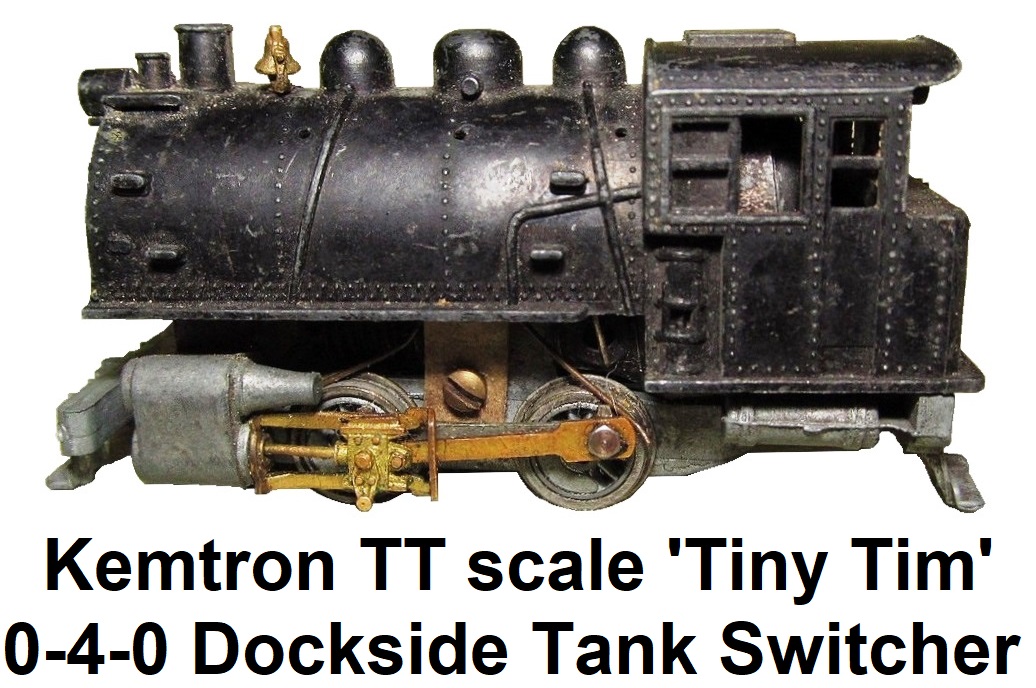 In 1970, Levon sold Kemtron to Lawrence S. Kazoyan (1931 – 2000), a retired aerospace engineer. The U.S. Hobbies name and business
stayed in Fresno, California. Larry Kazoyan moved the Kemtron business to the Los Angeles, California area. The official address
for the firm was initially 526 Hofgarden St., La Puente, CA. By 1977 a separate HO/HOn3 parts catalogued was issued. The business continued
to operate under the Kemtron name until 1978, when it was sold in parts. The Kemtron diesel line and UP etchings for the passenger
cars were sold to Jules Johnson of Johnson 'O' scale Models. Jules offered them under the name Rail Tex Models. The original
Kemtron cars had separate sides and roofs. Under Jules, they were retooled and the roof and sides were etched as one piece.
Jules produced the RS-3 and the GP-7, but did not do the GP-20. T. Fredrick Hill and Wayne Lyndon, owners of The Original Whistle
Stop Inc., acquired the rest of Kemtron in 1978 and moved it to Sacramento. They later sold the line to Dave Bush, owner of
Precision Scale as a merger in 1986. About two months
after the sale, Precision Scale Company had a fire and many of the Kemtron parts were lost. In 1985 Russ Briggs Designs
purchased the Kemtron Line of 'O' scale Union Pacific passenger cars and trucks from Jules Johnson. Russ sold them for a while,
eventually selling the tooling to John Pilling. About 1990, the passenger cars were acquired by Ron Sebastian at Des Plains
In 1970, Levon sold Kemtron to Lawrence S. Kazoyan (1931 – 2000), a retired aerospace engineer. The U.S. Hobbies name and business
stayed in Fresno, California. Larry Kazoyan moved the Kemtron business to the Los Angeles, California area. The official address
for the firm was initially 526 Hofgarden St., La Puente, CA. By 1977 a separate HO/HOn3 parts catalogued was issued. The business continued
to operate under the Kemtron name until 1978, when it was sold in parts. The Kemtron diesel line and UP etchings for the passenger
cars were sold to Jules Johnson of Johnson 'O' scale Models. Jules offered them under the name Rail Tex Models. The original
Kemtron cars had separate sides and roofs. Under Jules, they were retooled and the roof and sides were etched as one piece.
Jules produced the RS-3 and the GP-7, but did not do the GP-20. T. Fredrick Hill and Wayne Lyndon, owners of The Original Whistle
Stop Inc., acquired the rest of Kemtron in 1978 and moved it to Sacramento. They later sold the line to Dave Bush, owner of
Precision Scale as a merger in 1986. About two months
after the sale, Precision Scale Company had a fire and many of the Kemtron parts were lost. In 1985 Russ Briggs Designs
purchased the Kemtron Line of 'O' scale Union Pacific passenger cars and trucks from Jules Johnson. Russ sold them for a while,
eventually selling the tooling to John Pilling. About 1990, the passenger cars were acquired by Ron Sebastian at Des Plains
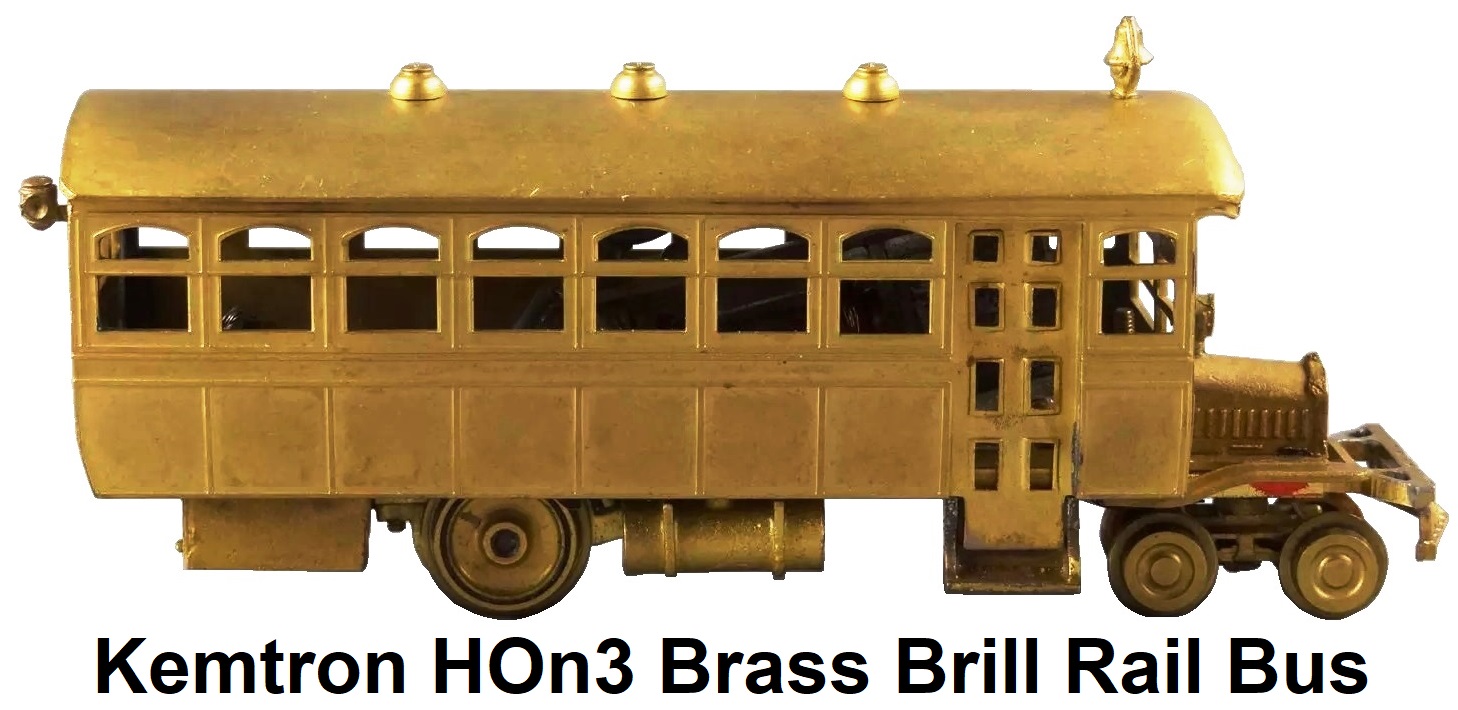 Hobbies from John Pilling. Des Plaines Hobbies continued to improve the artwork for the etchings, and added other cars to the
line. The Alco RS-3, the EMD GP-7, and the parts for the GP-20 went to Pat Mucci of P&D Hobby. P&D Hobby sold the GP-7 for a
while as a kit. Kemtron TT scale trains were sold later under the Robico name and even later sold by John Harmon
under the Allegheny Models name.
Hobbies from John Pilling. Des Plaines Hobbies continued to improve the artwork for the etchings, and added other cars to the
line. The Alco RS-3, the EMD GP-7, and the parts for the GP-20 went to Pat Mucci of P&D Hobby. P&D Hobby sold the GP-7 for a
while as a kit. Kemtron TT scale trains were sold later under the Robico name and even later sold by John Harmon
under the Allegheny Models name.
Levon Kemalyn was a 1999 Model Railroad Industry Association Hall of Fame inductee and a 2001 'O scale Hall
of Fame inductee. He was an acknowledged industry leader for his specialized skills in the lost wax casting process and
in the process of photo engraving/brass etching. Levon passed away November 6, 1976. Many of the Kemtron products are around
today for sale at 'O' Scale shows, and many are still being produced today, but under different manufacturers names.
